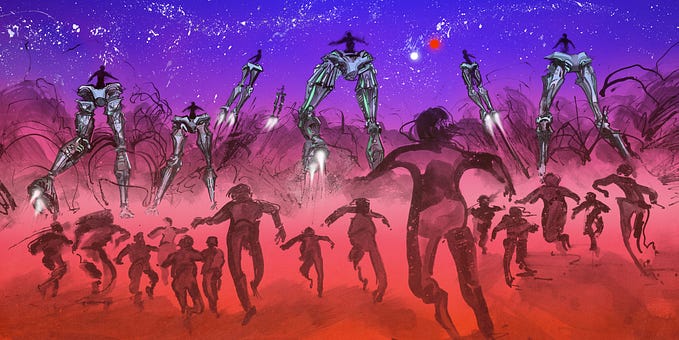Member-only story
A.I. Will Enhance — Not End — Human Art
Increasingly sophisticated artificial intelligence suggests that machines could unlock the secrets of human creativity. But have we been here before?

 In a tiny third-floor apartment in central London, the artist Anna Ridler was hunched over her desk. Next to the desk was a black PC tower whirring noisily and in front of her was a keyboard and a screen covered with a dense thicket of black-and-white code. As Ridler tapped in a few keystrokes, a window sprang open. In it were 16 images of tulips in jewel-like hues, arranged neatly in rows, like a page from a botanical textbook. Ridler inspected them skeptically. “Getting there,” she muttered.
In a tiny third-floor apartment in central London, the artist Anna Ridler was hunched over her desk. Next to the desk was a black PC tower whirring noisily and in front of her was a keyboard and a screen covered with a dense thicket of black-and-white code. As Ridler tapped in a few keystrokes, a window sprang open. In it were 16 images of tulips in jewel-like hues, arranged neatly in rows, like a page from a botanical textbook. Ridler inspected them skeptically. “Getting there,” she muttered.
It might not resemble the romantic image of an artist’s studio, but machine learning technology — and the computers that wield it — is becoming an important, even essential tool for many artists in the 21st century. When I met Ridler last month, she was at work revising a project for the forthcoming exhibition AI: More than Human at London’s Barbican Art Gallery. She had fed the machine with a series of digital photographs of tulips she took last year, then instructed an artificial intelligence (A.I.) algorithm to analyze and attempt to replicate them. Ridler’s aim was to make an infinite series of digital flowers — not copies, exactly, but automatically generated simulacra assembled from the fragments of the originals. Ridler wanted them to be plausible enough to fool the unwitting eye: “My version of a Dutch still life,” she explained, created for the age of computerized automation.
“But it’s art — it’s not meant to be real, is it?”
Except, technically, it was her computer that was doing the creating. Every few hours, the program would use a Generative Adversarial Network (GAN) to learn and refine what it was doing: teaching itself to draw, step by painstaking step. It was like watching a child learn the rudiments of art, but at terrifying speed.
Together, we watched as the hard drive whirred and spat out another batch of tulips, this one more eerily perfect than the last. The whole thing — the images, the technology — looked a little unreal.








